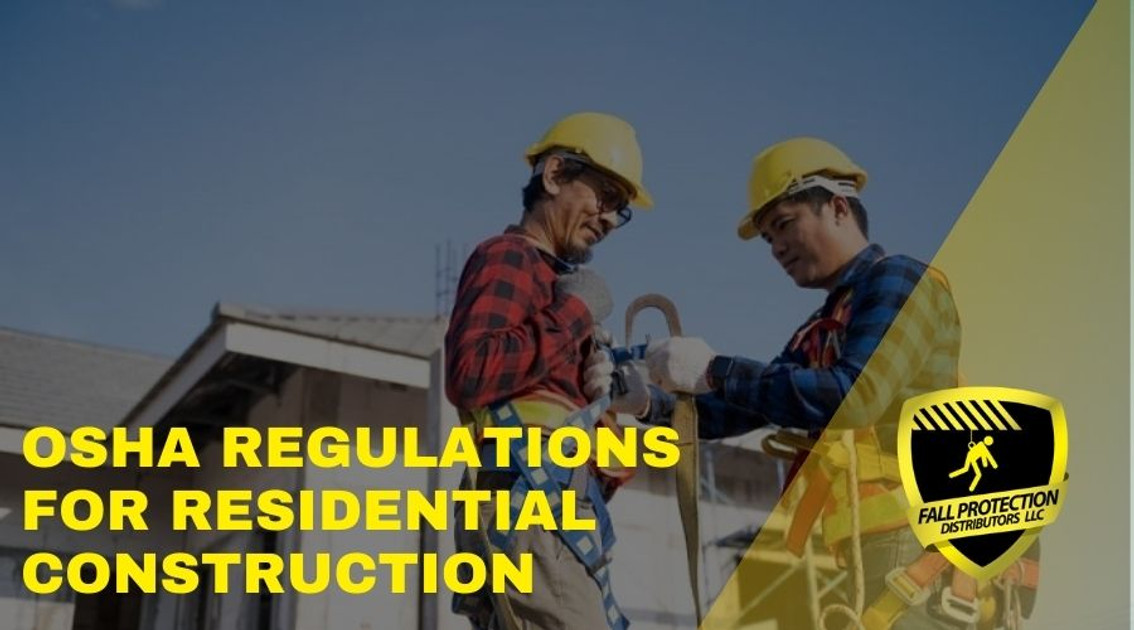OSHA Regulations for Fall Protection on Residential Roofs
Posted by Howie Scarboro - CEO Fall Protection Distributors, LLC on Feb 2nd 2024
What Fall Protection Is Required on Residential Roofing Jobs?
Have questions about the appropriate fall protection regulations that apply to residential construction? Unfortunately, the safety regulations are a complex and ever-evolving framework of rules. Let’s dive into the regulations that apply to the residential construction industry with a focus on fall protection equipment and training.
Did you know falls from roofs are the leading cause of fatalities in the construction industry? Yikes! It's a sobering statistic, but one that highlights the crucial importance of proper fall protection, especially for residential roofers like you. This guide unravels the essentials of OSHA regulations and explains them in plain English. So, grab your hard hat, buckle up, and let's dive into the world of residential fall protection!
OSHA Standards for Residential Fall Protection:
While OSHA 1926.501 might seem like a complex maze at first, fear not! Here's a simplified breakdown of the key fall protection rules you need to remember:
1926.501(b)(13):
This standard requires employers to provide fall protection for employees working on residential roofs. This is important because falls from roofs can result in serious injuries or fatalities. By providing fall protection, employers can help prevent these accidents and keep their employees safe.

1926.501(b)(1):
This standard requires employers to provide fall protection for employees working on walking/working surfaces with an unprotected side or edge that is 6 feet or more above a lower level. This is important because falls from elevated surfaces can be fatal. By providing fall protection, employers can help prevent these accidents and keep their employees safe.
1926.501(a)(1):
This standard requires employers to provide fall protection for employees working on unprotected sides and edges of a walking/working surface that are 6 feet or more above a lower level. This is important because falls from unprotected sides and edges can be fatal. By providing fall protection, employers can help prevent these accidents and keep their employees safe.
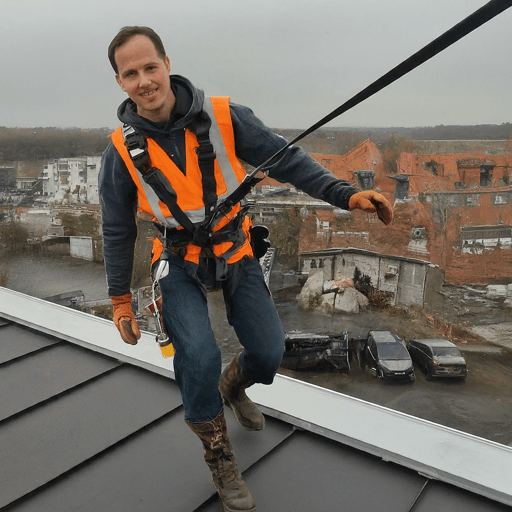
1926.501(b)(10):
This standard requires employers to provide fall protection for employees working on steep roofs with slopes greater than 4 in 12 (vertical to horizontal). This is important because falls from steep roofs can result in serious injuries or fatalities. By providing fall protection, employers can help prevent these accidents and keep their employees safe.
1926.501(b)(11):
This standard requires employers to provide fall protection for employees working on low-slope roofs with slopes less than or equal to 4 in 12 (vertical to horizontal). This is important because falls from low-slope roofs can result in serious injuries or fatalities. By providing fall protection, employers can help prevent these accidents and keep their employees safe.
1926.501(b)(4)(i):
This standard requires employers to provide fall protection for employees working on leading edges that are 6 feet or more above a lower level. This is important because falls from leading edges can be fatal. By providing fall protection, employers can help prevent these accidents and keep their employees safe.
Nothing can help spread safety awareness amongst a work crew better than an ethical and responsible safety culture. This mindset has to start at the top of the organization and trickle down to every employee. Every decision from the top level should lead with safety first, cost and profits be lead by how to accomplish the task safely first, before any other consideration such as time and profit are even considered. Once the safety plan is developed, then it is easy to determine project lead times and labor costs.
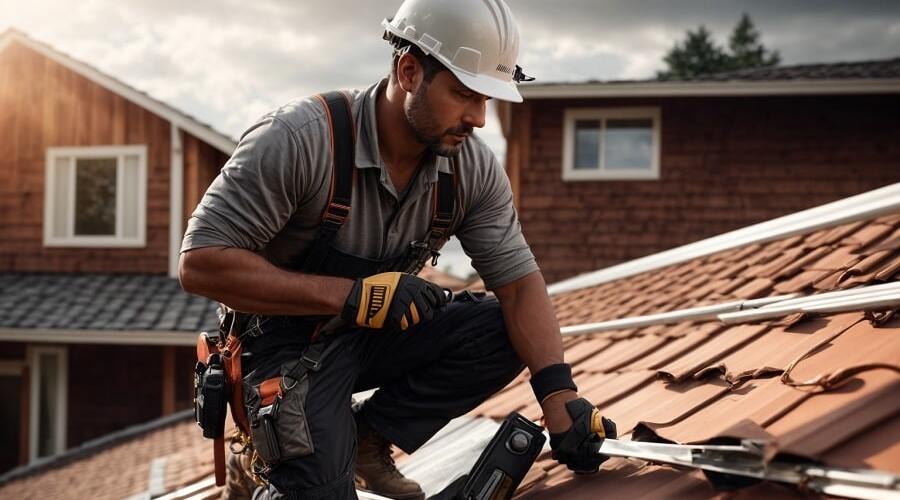
Remember, these are just the highlights. Always consult the full OSHA standards ( 29 CFR 1926.501 and 1926.105) for the complete picture and any specific requirements for your roofing projects.
Gearing Up for Safety: Your Fall Protection Arsenal
Now that you know the OSHA rules, it's time to equip your crew with the right tools for the job. But with so many options available, choosing the right fall protection gear can feel like navigating a jungle gym blindfolded. Don't worry, we've got your back (literally!). Here are some essential items to consider:
Harnesses:
Think of these as your safety superheroes, distributing fall arrest forces evenly and comfortably. Choose the right type and size for each worker. The Malta Dynamics Warthog B2002 is a best seller and offers universal fit in the XL/2X size with excellent adjustability for a wide range of body types.
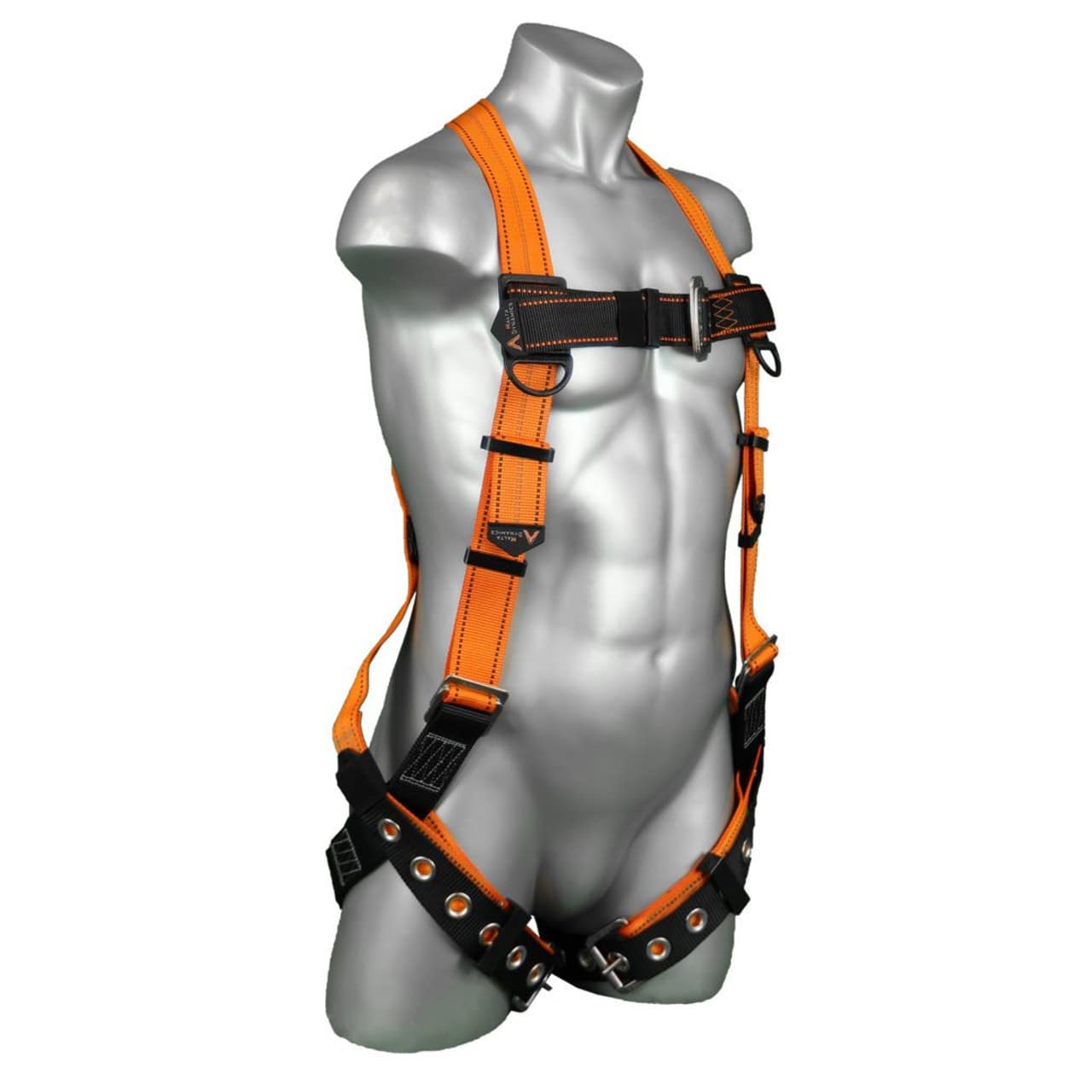
Horizontal Lifelines:
These are the anchor points for your fall arrest system, like a trusty rope connecting you to the roof (but hopefully never needing to be used!). Ensure they're strong enough to handle potential falls. Typically HLL systems are designed for either 2 workers or 4 workers. You will find these ranging from 30' up to 100'.
An excellent example would be the Malta Dynamics HLL3001 4 man horizontal lifeline kit featuring kernmantle rope. 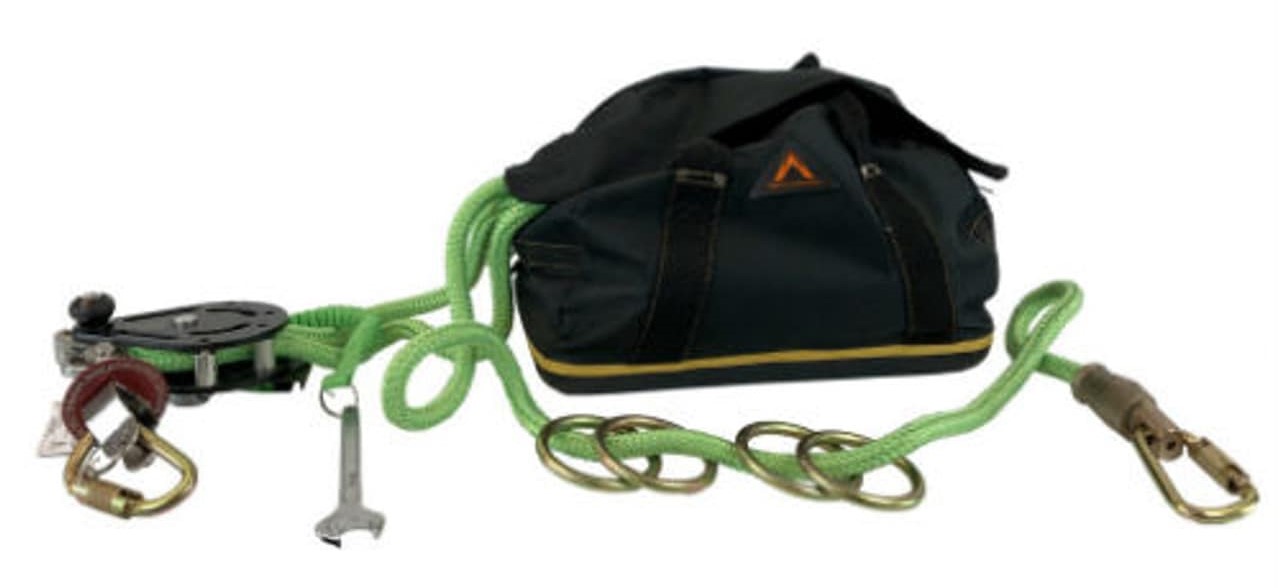
It can be adjusted to any length up to 100' and can be used for 4 workers on most roofs, and 2 workers when attached to standing seam roofs using the SSRA HLL mounting system.
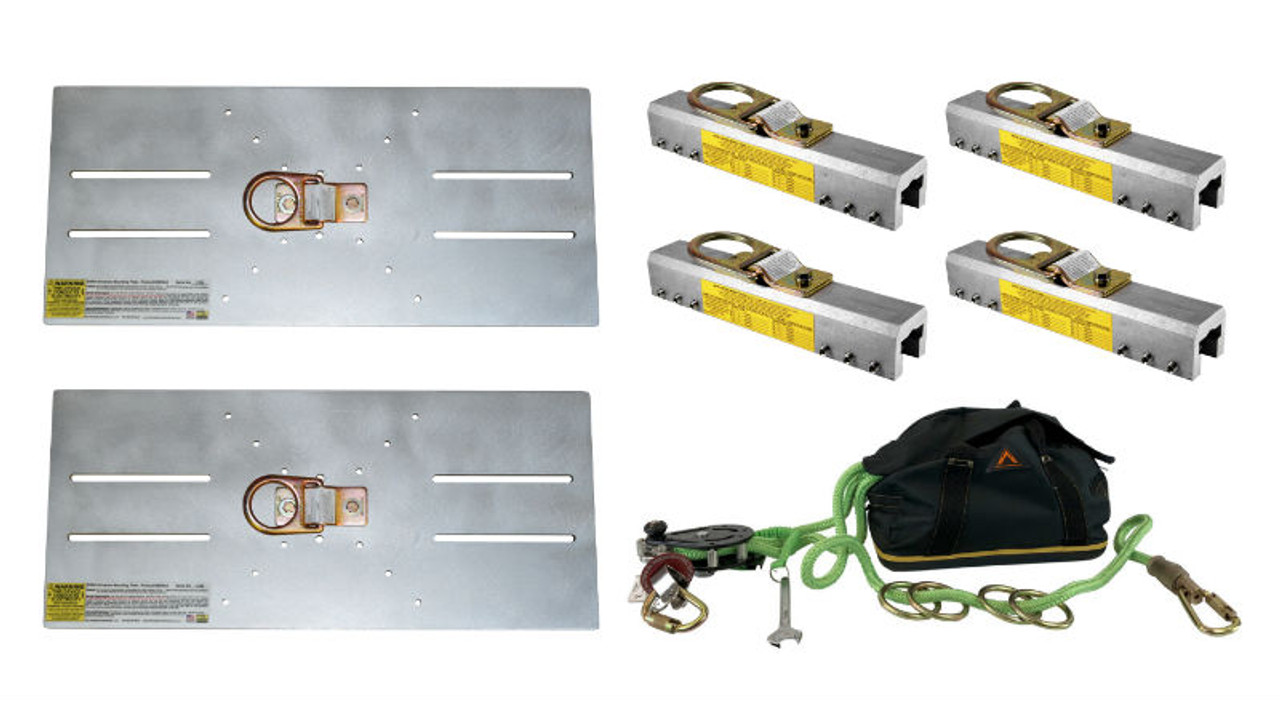
Roof Anchors for Standing Seam Roofs:
Standard anchors might not work on these tricky surfaces. Invest in specialized options designed for secure attachment. The Standing Seam Roof Anchor SSRA1 is the most universal fit solution for providing anchorage points on standing seam roofs with zero penetrations.
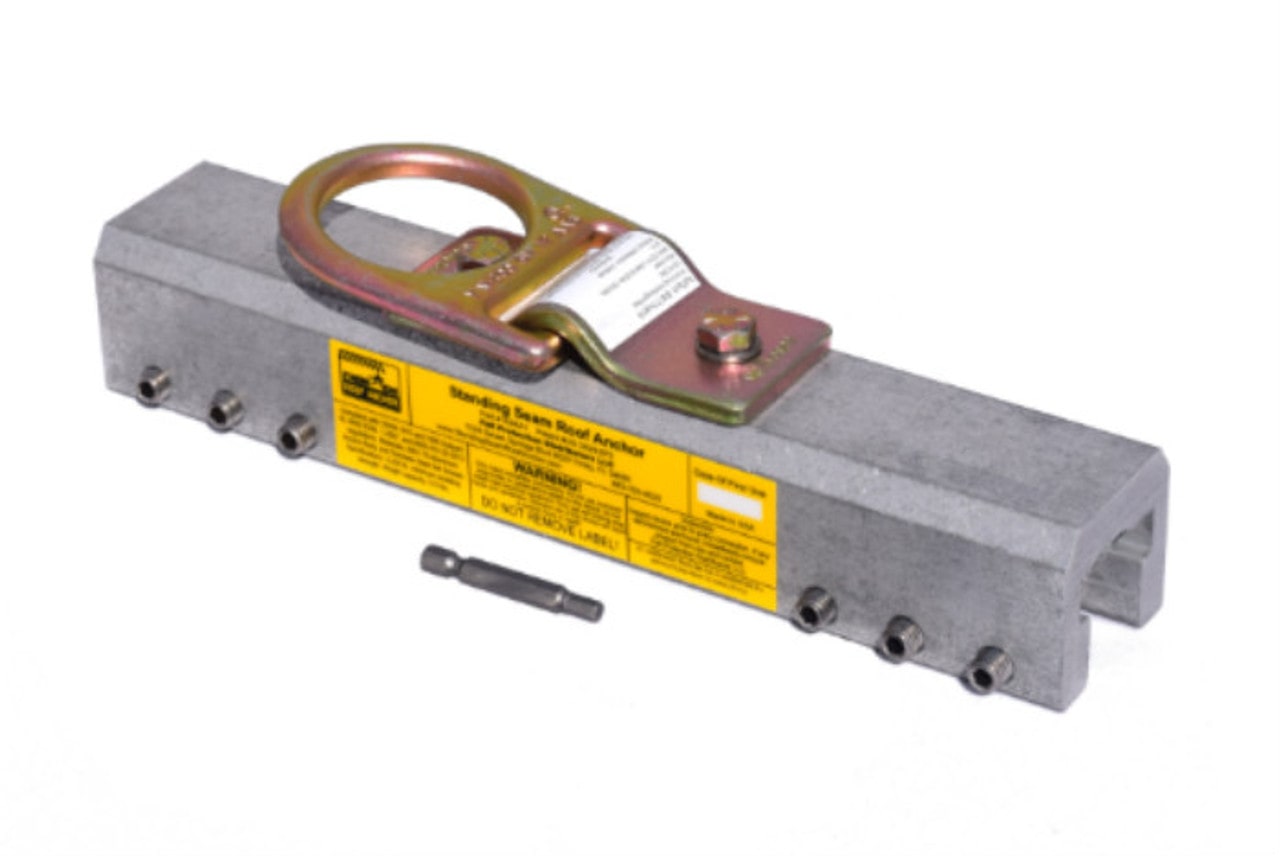
Lanyards:
The connectors between you and your lifeline, these come in various lengths and types. Choose ones that offer the right freedom of movement while ensuring fall arrest. The Malta Dynamics C7050 is a 50' vertical lifeline with shock absorbing lanyard and rope grab all in one simple to deploy package.
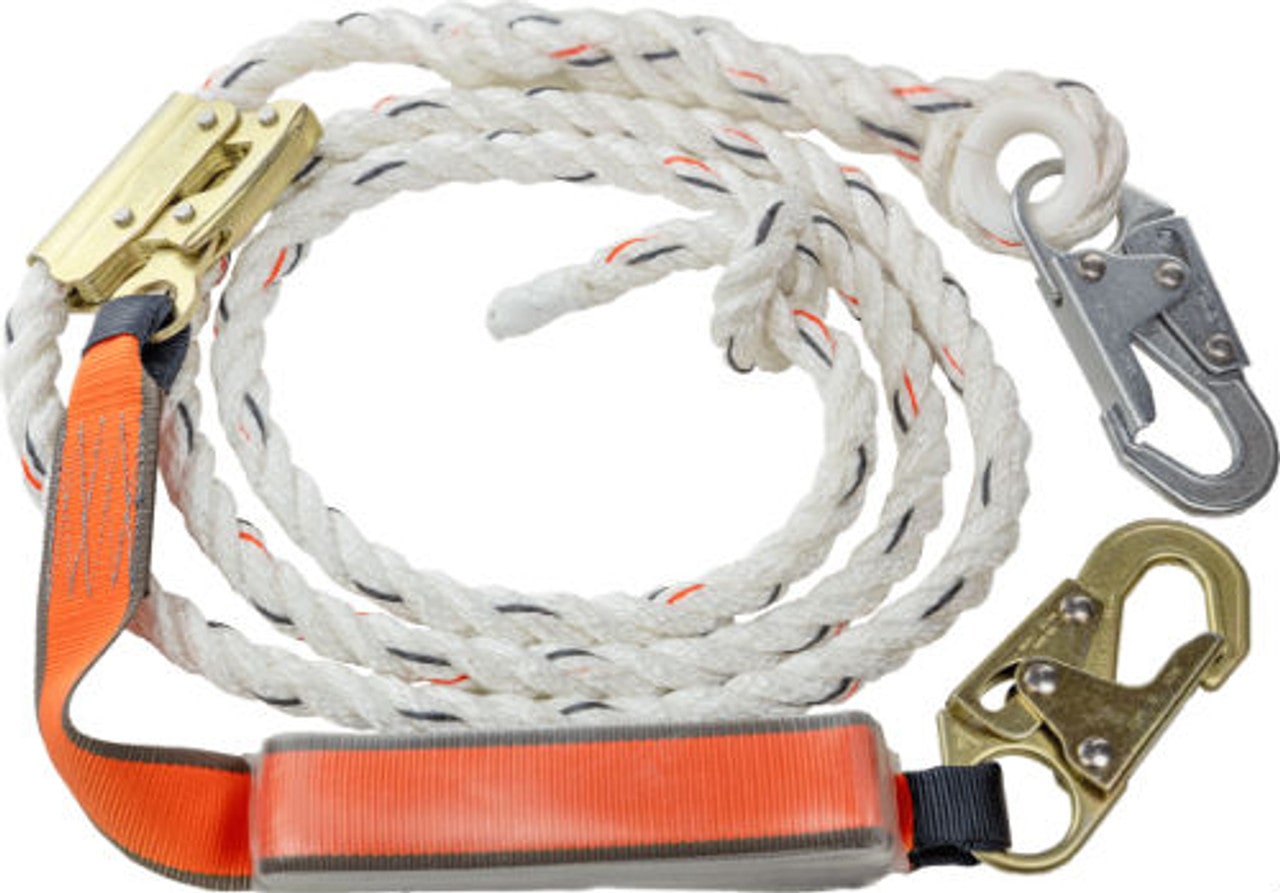
Temporary Anchors:
For short-term tasks or areas where permanent anchors are impractical, these provide a secure attachment point. The RidgePro device is an innovative product that replaces the old style chicken ladders and ladder hooks with a lighter, stronger and more productive solution. It rolls up the roofs and locks over the peak. The workers is 100% tied off from the ladder until he returns back to the ladder.

Remember, proper training is crucial! Ensure your crew knows how to use each piece of equipment safely and effectively. Regular inspections and maintenance are also vital to keep your fall protection gear in top shape.
Conclusion: Safety First, Always
Fall protection isn't just an OSHA requirement, it's a moral imperative. Your crew's safety is in your hands, and providing them with the proper equipment and training is an investment in their well-being and your peace of mind.
Feeling overwhelmed? Download our Hazard Assessment Worksheet for workplace inspections today. And remember, safety isn't a choice, it's a responsibility. Make it your priority today!

